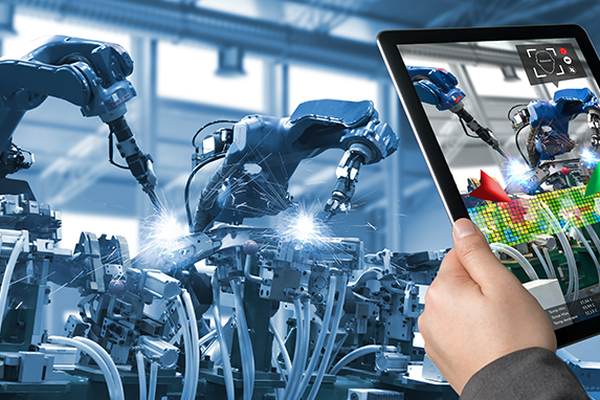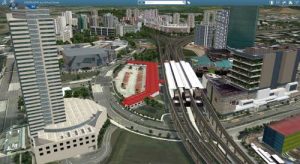Published on the 19/03/2019 | Written by Jonathan Cotton

Big growth predicted for digital twin tech, as IoT, data analytics and efficiency come together…
Bridging the gap between the physical and digital, so-called ‘digital twin’ technology seems to finally be coming of age.
But first things first: There are different definitions as to just what a digital twin is, but at its simplest, a digital twin is a digital ‘copy’ of a physical asset. So far so good, but where it gets interesting is when IoT and sensor technology are added to the mix. Using data from sensors in the real world, digital twin technology lets us mirror changes that assets undergo in the ‘real world’ and apply those changes to our digital model. From there it’s increasingly easy to better understand that asset, predict future changes to it, and, in business, find ways to extract revenue from or reduce the costs of that asset. Add to that AI and machine learning algorithms and the potential really opens up.
So far the excitement is centring around machine optimisation and maintenance. Take commercial trucking as an example. Modern trucking fleets produce a lot of data – location, motion, engine status, and that’s just for starters. But the way this data is generated and collated creates complexity and redundancy, says Gartner, as different onboard systems collect discrete data points and transmit them over different channels.
“The traditional approach wastes effort and resources because the data is overlapping and redundant.”
“The traditional approach wastes effort and resources because the data is overlapping and redundant,” says W. Roy Schulte, VP analyst at Gartner.
“Additionally, it’s very complex and expensive to establish a new channel for every new application that needs to access the data.”
Enter the digital twin, says Gartner, a “design pattern” that “decouples each system from the physical thing.”
“Instead of communicating with each data receiver separately, the truck just sends all the data to its digital twin,” explains Gartner. “Business units that need information are connected to the twin and can access the data.”
That means potentially significant decreases in the complexity of IoT ecosystems, increases in efficiency and improved decision making capabilities for business.
“When combining the twin data with business rules, optimisation algorithms or other prescriptive analytics technologies, digital twins can support human decisions or even automate decision making,” says Gartner.
“For example, a capability of the digital twin of a truck could be to track the state of the brakes. Current and historical data in the twin will provide the estimated time for the next needed maintenance, which the maintenance system can use to schedule at the optimal time.”
Digital twins are already well established in both the manufacturing and aeronautical industries: A GE aircraft engine for example currently transmits around two terabytes of thermal, mechanical, electrical, chemical, fluid dynamic, material, lifing, economic and statistical information in just a few hours of flight.
It’s all very clever, and the next stop is rapid growth says Gartner researchers, especially for those companies investing heavily in IoT. Thirteen percent of organisations implementing Internet of Things projects already use digital twins the research company says, while 62 percent are either in the process of establishing digital twin use or plan to do so, according to a recent IoT implementation survey.
“This rapid growth in adoption is due to extensive marketing and education by technology vendors, but also because digital twins are delivering business value and have become part of enterprise IoT and digital strategies.
Within the next five years Gartner estimates that hundreds of millions of things will have digital twins.
And as the technology moves from representing single items such as jet engines to encompassing entire systems of interconnected things, the thinking is being applied in increasingly ambitious ways – such as Hospitals in Norway and the Port of Rotterdam – and even whole cities.
Produced by 3D design and engineering software company Dassault Systèmes, a digital twin for Singapore city is replicating everything from bus stops to buildings to create a Virtual Singapore.
 At a price of S$73m, the data-rich, live digital replica of the city lets urban planners test ideas without the risk and cost of physical experiments – a godsend in Singapore’s dense urban setting. Among those experiments: Identifying wireless network coverage across the city and deciding where new antennas should be placed, and mapping dengue cases to study the way clusters evolve over time.
At a price of S$73m, the data-rich, live digital replica of the city lets urban planners test ideas without the risk and cost of physical experiments – a godsend in Singapore’s dense urban setting. Among those experiments: Identifying wireless network coverage across the city and deciding where new antennas should be placed, and mapping dengue cases to study the way clusters evolve over time.
While that sort of pricing won’t make digital twinning every city a near term outcome, it is a design philosophy with the kind of industrial applicability that will see it continue to accelerate (and maybe, even, double).



























